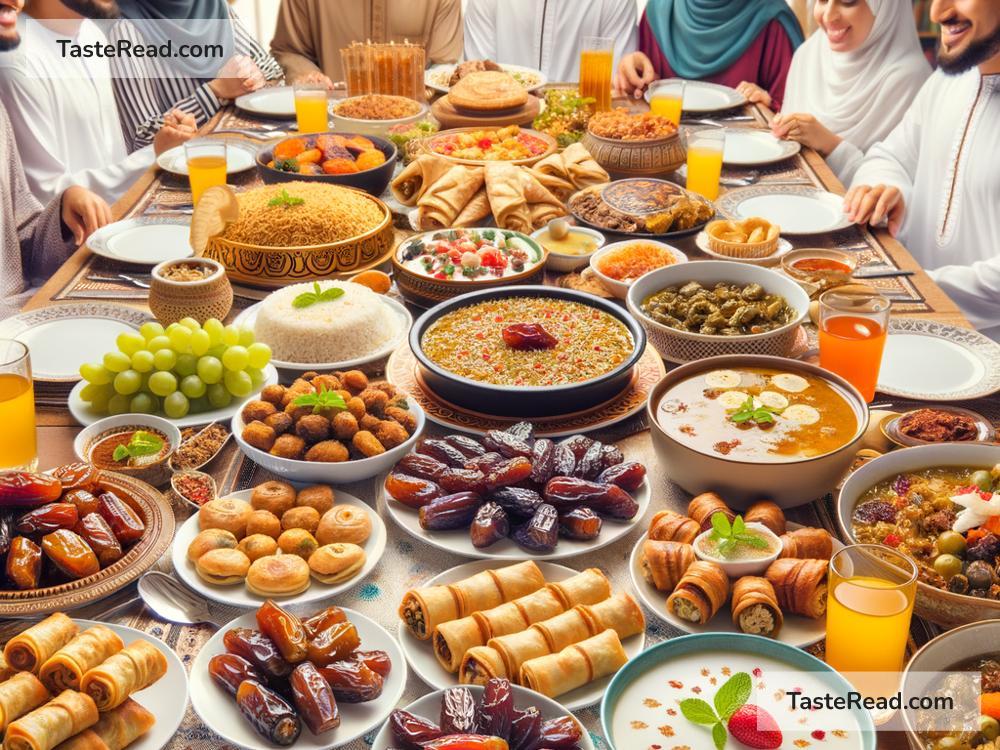Food Traditions During Ramadan Across the Muslim World
Ramadan is one of the holiest months in the Islamic calendar. It is a time for fasting, reflection, prayer, and community. Muslims all over the world fast from sunrise to sunset during this month, refraining from food, water, and other physical needs during the daytime as an act of devotion to God. But while fasting is a spiritual practice, food plays an important role in bringing families and communities together during Ramadan, especially at the two main meals each day: Suhoor (the pre-dawn meal) and Iftar (the meal to break the fast after sunset). These meals are filled with love, tradition, and culinary delights that vary across the Muslim world. Let’s explore the rich food traditions that make Ramadan special across different regions.
Middle East and North Africa: Dates and Savory Dishes
In the Middle East, breaking the fast typically starts with eating dates and drinking water or juice, following the practice of Prophet Muhammad (peace be upon him). Dates are high in energy and are perfect for replenishing the body after a day of fasting. After the initial date and drink, families then enjoy more substantial meals with a variety of dishes.
One dish that is common in many Middle Eastern countries is lentil soup, a comforting and nourishing start to Iftar. Another favorite is kabsa, a spiced rice dish often served with chicken, lamb, or vegetables. In Lebanon and Syria, you’ll find fattoush, a fresh salad made with crispy pita bread and tangy dressing. And who can forget samosas or sambusas, crispy triangular pastries filled with meat, potatoes, or cheese, which are enjoyed throughout the region?
Desserts during Ramadan are also a highlight. Countries like Egypt offer sweet treats like kunafa, a pastry made with shredded phyllo dough and cream, while Morocco is famous for its chebakia, a honey-drenched sesame cookie that is often paired with harira, a rich tomato and lentil soup.
South Asia: Spice and Variety
In South Asia, Ramadan meals are bursting with flavor and bold spices. Iftar tables typically include fritters like pakoras and samosas, which are loved for their crispy texture and delicious fillings. Another favorite is fruit chaat, a spiced fruit salad that adds a refreshing touch to the spread. Drinks during Iftar often include rooh afza, a rose-scented syrup mixed with milk or water, offering a sweet and cooling beverage after fasting all day.
For Suhoor in places like Pakistan, Bangladesh, and India, people often eat hearty dishes such as parathas (flatbreads), dal (lentils), and omelette to provide energy for the day ahead. Many families also enjoy beef or chicken curries paired with rice, ensuring they stay full until it’s time to break the fast.
Ramadan desserts in South Asia are legendary as well. Sweet gulab jamun (milk dumplings soaked in syrup) and jalebi (deep-fried batter dipped in sugar syrup) are cherished treats that bring joy to the occasion.
Southeast Asia: Fresh and Flavorful
In countries like Indonesia and Malaysia, Ramadan food traditions are colorful and fresh. Kolak, a sweet dessert made from coconut milk, palm sugar, and fruit (like bananas or jackfruit), is a beloved Iftar dish in Indonesia. Variations of rice pudding and sweetened porridge are also popular.
Martabak, a stuffed pancake filled with meat or sweet ingredients, is another favorite, along with savory skewers of chicken or lamb satay, dipped in flavorful peanut sauce. Rice dishes such as nasi goreng (fried rice) or rendang (spicy meat stew) are staples for Suhoor.
Malaysian Iftars often feature bee hoon goreng (fried rice vermicelli noodles), ketupat (rice packed in woven palm leaves), and various curries. These vibrant, aromatic dishes are a beautiful reflection of the region’s culinary diversity.
Turkey and Central Asia: Sharing and Feasting
In Turkey, Suhoor and Iftar meals are typically communal and feature rich dishes meant for sharing. For Iftar, many families indulge in pide, a special Ramadan bread topped with sesame seeds, alongside dishes like mercimek çorbası (lentil soup) and kebabs. Another favorite is sarma, vine leaves stuffed with rice and spices—a dish rooted in Ottoman cuisine.
Desserts are also worth mentioning. Baklava, layers of flaky pastry filled with nuts and soaked in syrup, is a Ramadan staple in Turkey and Central Asia. In Uzbekistan and neighboring countries, dishes like plov (rice cooked with meat and vegetables) and manty (steamed dumplings) are popular Suhoor options, keeping families nourished and satisfied.
Sub-Saharan Africa: Rice, Bread, and Flavorful Stews
Across Sub-Saharan Africa, Iftar menus are hearty and comforting. In Senegal, people enjoy ceebu jën, a flavorful rice and fish dish, while in Nigeria, jollof rice—a spicy one-pot rice dish—takes center stage. Families may also prepare fufu or injera bread to be eaten with rich vegetable stews and curries.
Sweet drinks like bissap, made from hibiscus, and ginger juice are popular choices for breaking the fast. Fresh fruits like watermelon and mangoes are widely enjoyed after a long day of fasting in this region.
Ramadan: A Celebration of Diversity
Though fasting is a universal practice during Ramadan, the foods shared at Suhoor and Iftar reflect the diversity of the Muslim world. Whether it’s savory samosas in South Asia, rich meat stews in Africa, or sweet baklava in Turkey, these meals are moments of togetherness, gratitude, and joy. Across cultures and continents, food bridges communities during Ramadan, reminding everyone of the value of generosity and connection.
This Ramadan, let’s celebrate the beauty of these traditions and the unity that food brings to Muslim communities across the globe!


